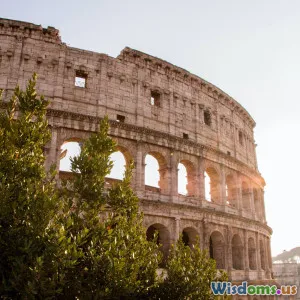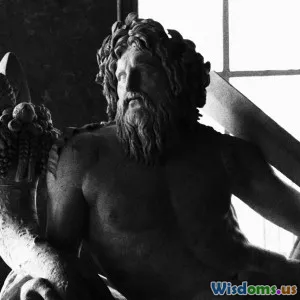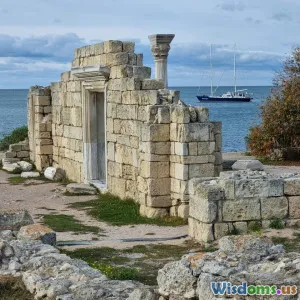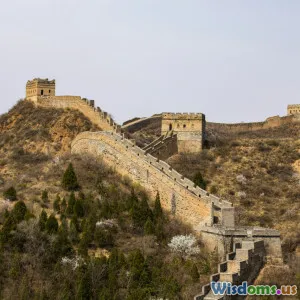
Three Surprising Roman Myths Explained by Archaeology
9 min read Discover how archaeology unravels unexpected truths behind enduring Roman myths, reshaping our understanding of Rome's ancient stories. (0 Reviews)
Three Surprising Roman Myths Explained by Archaeology
The myths of ancient Rome have long enchanted historians, scholars, and the curious alike. From the legendary founders Romulus and Remus to tales of divine intervention in politics and mythic war stories, these narratives have shaped not only the identity of Rome but Western culture itself. However, modern archaeological findings have begun to cast fresh light on the veracity of these accounts. Far from simply confirming or debunking what ancient Roman authors recorded, archaeology reveals surprising complexities, contextual factors, and sometimes entirely new interpretations.
In this article, we explore three prominent Roman myths whose longstanding traditional understandings have been challenged – or intriguingly confirmed – by archaeological investigation. These revelations do more than nuance familiar stories; they enrich our grasp of early Roman history, society, and cultural priorities.
1. The Myth of Romulus and Remus: Brotherhood, Founding, and Urban Origins
The Traditional Story
According to Roman mythology, Rome’s founding centers on twin brothers Romulus and Remus, sons of the god Mars and the Vestal Virgin Rhea Silvia. Abandoned at birth, the twins were famously suckled by a she-wolf before Romulus ultimately killed Remus and founded the city of Rome on the Palatine Hill in 753 BCE.
The tale embodies themes of divine destiny, fierce rivalry, and the mythic birth of a civilization.
Archaeological Revelations
Excavations on the Palatine Hill, the site traditionally associated with Rome’s origin, have uncovered settlements dating to at least 1000 BCE, indicating human occupation long before the traditional date of 753 BCE. Artefacts such as pottery shards, tools, and remains of huts suggest gradual urbanization rather than a single cataclysmic founding event.
Moreover, recent digs near the Lupercal cave—connected in myth to the she-wolf’s nurturing of the twins—have unveiled structures that may have housed early cultic activity. This suggests the wolf legend might be symbolic, perhaps connected to an ancient pastoral cult revered for its protective powers, rather than a literal she-wolf breastfeeding children.
What This Means
The archaeological record supports the idea that Rome’s foundation myth conceals kernels of truth about early tribal unifications and religious practices. Romulus and Remus likely represent amalgamations of various early groups whose complex interrelations are simplified into the tale of two brothers. The myth thus serves not only as a foundation story but as a symbolic narrative explaining political power struggles and religious legitimacy.
2. The Tale of the Sabine Women: Mythic Rape or Diplomatic Merger?
The Traditional Story
The abduction of the Sabine women is one of Rome's most infamous myths. Shortly after founding the city, Romulus purportedly encouraged Roman men to abduct women from neighboring Sabine families to secure wives for his male settlers—leading to a war that ended when the Sabine women intervened to stop the fighting.
This story embodies themes of conflict, reconciliation, and social integration.
Archaeological Insights
Recent archaeological layers in areas associated with the Sabine population show signs of cultural blending and peaceful coexistence rather than catastrophic conflict. Excavations in central Italy reveal pottery styles, funerary practices, and architectural elements indicative of fusion between Roman inhabitants and surrounding Italic peoples.
The famed Capitoline Museum displays inscriptions and artifacts pointing to mutual alliances and shared religious festivals, undermining the notion that the relationship was solely hostile or one-sided abduction.
Interpretation and Broader Implications
The myth of the Sabine women likely encapsulates a historic process of social assimilation through marriage alliances and political bargains rather than violent kidnapping. Archaeology paints a picture of early Rome as a growing, evolving society integrating neighboring cultures, thus casting the “rape” element as a narrative device expressing hardships of integration rather than factual history.
This understanding encourages a re-evaluation of myths of war and conquest in early Roman identity with a greater appreciation for peaceful coalition-building and cultural syncretism.
3. The Great Fire of Rome and Nero’s Role: More Flames Than Truth?
Traditional Account
The Great Fire of 64 CE, devastating much of Rome, is central in Roman historiography. Tacitus describes Emperor Nero as possibly starting the fire to clear land for his grand palace complex, portraying Nero as a tyrant indifferent to Rome’s suffering, famously “fiddling while Rome burned.”
Archaeological Evidence
Excavations in and around the ancient city reveal widespread fire damage dating precisely to the mid-1st century CE. Analysis of stratigraphy and building materials confirms extensive destruction followed by large-scale imperial rebuilding projects.
However, no direct archaeological evidence supports Nero intentionally igniting the fire. The emperor’s lavish Domus Aurea palace, once presumed proof of his culpability, may actually reflect broader urban renewal strategies.
Furthermore, recent studies of soot layers and urban layouts suggest that multiple accidental ignition points might explain the rapid fire spread, consistent with Rome's densely packed wooden structures.
Reassessing Nero’s Image
While Nero’s post-fire response was extravagant and politically controversial, archaeology promotes a more nuanced view. Rather than villainous pyromaniac, Nero emerges as a key figure in addressing the disaster’s aftermath, rebuilding the city with improved infrastructure. Tacitus’s accounts are recognized as shaped by senatorial bias against Nero.
Archaeologically grounded analysis challenges the simplistic narrative of Nero's guilt and invites reconsideration of political propaganda's role in shaping historical memory.
Conclusion
The interplay between Roman mythology and archaeology opens riveting windows into the complexities of ancient Roman society. Where myths tend to distill history into dramatic, memorable stories, archaeology reveals messy realities beneath the surface. From early urbanization obscured by foundation legends to the nuanced processes of cultural unification and political propaganda, archaeological evidence challenges assumptions and deepens knowledge.
These three case studies—Romulus and Remus, the Sabine women, and Nero’s Great Fire—demonstrate that archaeology does not simply dispel myths but transforms them into layered, evidence-informed narratives. As we continue unearthing Rome’s past bricks and bones, our understanding of one of civilization’s greatest empires becomes ever richer and more human.
References:
- Cornell, Timothy J. The Beginnings of Rome: Italy and Rome from the Bronze Age to the Punic Wars (c.1000–264 BC). Routledge, 1995.
- Flower, Harriet I. Roman Republics. Princeton University Press, 2019.
- Millar, Fergus. The Roman Empire and Its Neighbours. University of North Carolina Press, 1981.
- Coarelli, Filippo. Rome and Environs: An Archaeological Guide. University of California Press, 2007.
- Tacitus, Annals, translated by Alfred John Church and William Jackson Brodribb.
- Archaeological reports from the Palatine Hill and Capitoline Museums (2018–2023).
Exploring archaeology’s revelations illuminates how our collective memory evolves and how myths remain vital to cultural identity—much more than mere stories, they are living lenses into human history.
Rate the Post
User Reviews
Popular Posts















